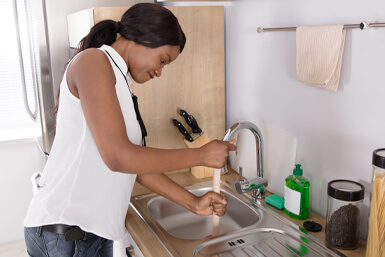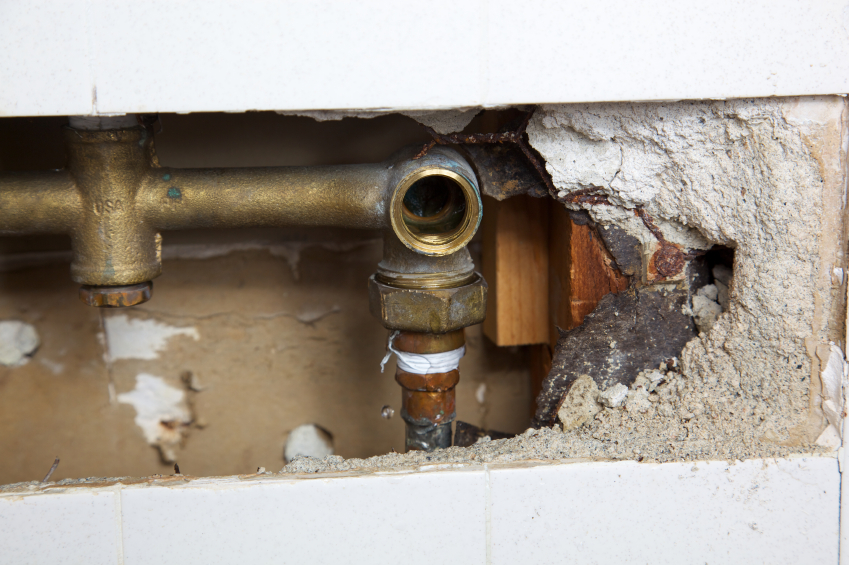Appliance Troubles? Why Some Issues Require an Experienced Plumbing Professional
Appliance Troubles? Why Some Issues Require an Experienced Plumbing Professional
Blog Article
Just how do you actually feel when it comes to Why is My Home Making Strange Plumbing Noises?

To detect loud plumbing, it is essential to determine initial whether the unwanted sounds take place on the system's inlet side-in other words, when water is turned on-or on the drainpipe side. Noises on the inlet side have differed causes: too much water stress, worn shutoff and tap components, incorrectly connected pumps or various other devices, improperly placed pipeline bolts, as well as plumbing runs containing a lot of tight bends or various other limitations. Noises on the drainpipe side generally stem from inadequate area or, just like some inlet side noise, a format including tight bends.
Hissing
Hissing sound that happens when a tap is opened somewhat typically signals too much water stress. Consult your local public utility if you think this problem; it will certainly be able to inform you the water pressure in your area and can install a pressurereducing shutoff on the inbound water supply pipe if necessary.
Other Inlet Side Noises
Squeaking, squeaking, damaging, snapping, as well as tapping normally are caused by the development or contraction of pipelines, typically copper ones providing hot water. The audios happen as the pipelines slide against loosened fasteners or strike close-by house framework. You can often identify the area of the issue if the pipelines are exposed; simply follow the sound when the pipes are making noise. Most likely you will find a loose pipe hanger or an area where pipes lie so close to floor joists or various other framing pieces that they clatter versus them. Affixing foam pipeline insulation around the pipes at the point of get in touch with must treat the problem. Be sure straps as well as wall mounts are safe and secure and offer sufficient assistance. Where feasible, pipeline fasteners should be connected to huge structural elements such as foundation walls rather than to mounting; doing so decreases the transmission of vibrations from plumbing to surfaces that can amplify and transfer them. If attaching bolts to framework is inescapable, cover pipelines with insulation or various other resistant product where they get in touch with bolts, and sandwich the ends of brand-new bolts between rubber washing machines when mounting them.
Correcting plumbing runs that suffer from flow-restricting tight or many bends is a last resort that should be embarked on just after speaking with a competent plumbing service provider. Unfortunately, this circumstance is relatively usual in older houses that may not have been constructed with interior plumbing or that have seen several remodels, particularly by novices.
Babbling or Shrilling
Intense chattering or screeching that happens when a shutoff or tap is activated, which usually disappears when the fitting is opened completely, signals loose or faulty inner components. The solution is to replace the valve or faucet with a new one.
Pumps as well as appliances such as washing devices and dishwashing machines can transfer motor noise to pipelines if they are poorly attached. Connect such things to plumbing with plastic or rubber hoses-never stiff pipe-to isolate them.
Drain Noise
On the drain side of plumbing, the chief goals are to remove surface areas that can be struck by dropping or hurrying water as well as to insulate pipes to contain unavoidable audios.
In brand-new building and construction, tubs, shower stalls, commodes, and also wallmounted sinks and also basins must be set on or against durable underlayments to decrease the transmission of sound through them. Water-saving toilets and taps are less noisy than conventional versions; mount them rather than older kinds even if codes in your area still permit using older fixtures.
Drains that do not run up and down to the cellar or that branch right into horizontal pipe runs supported at flooring joists or various other mounting present particularly troublesome noise troubles. Such pipelines are big enough to radiate considerable resonance; they additionally bring considerable amounts of water, that makes the scenario even worse. In new construction, define cast-iron dirt pipes (the large pipelines that drain pipes bathrooms) if you can afford them. Their enormity consists of much of the noise made by water travelling through them. Likewise, avoid routing drains in walls shown bedrooms and also rooms where individuals gather. Wall surfaces consisting of drainpipes must be soundproofed as was described previously, utilizing dual panels of sound-insulating fiberboard and also wallboard. Pipes themselves can be covered with special fiberglass insulation created the function; such pipes have a resistant vinyl skin (sometimes consisting of lead). Results are not constantly satisfying.
Thudding
Thudding sound, commonly accompanied by trembling pipelines, when a tap or appliance shutoff is turned off is a problem called water hammer. The noise and also vibration are caused by the resounding wave of pressure in the water, which unexpectedly has no place to go. Occasionally opening a shutoff that discharges water swiftly into an area of piping including a constraint, elbow joint, or tee installation can produce the very same condition.
Water hammer can generally be cured by setting up installations called air chambers or shock absorbers in the plumbing to which the issue shutoffs or faucets are attached. These devices enable the shock wave created by the halted circulation of water to dissipate in the air they include, which (unlike water) is compressible.
Older plumbing systems might have short upright sections of capped pipe behind wall surfaces on faucet competes the very same function; these can at some point fill with water, minimizing or damaging their efficiency. The treatment is to drain the water system entirely by shutting off the primary water valve as well as opening up all faucets. Then open up the major supply valve as well as shut the taps one at a time, beginning with the tap nearest the valve as well as finishing with the one farthest away.
If Your Plumbing is Making These Sounds, There’s a Problem
A Bang or Thump When You Turn Off a Faucet
If a loud bang or thump greets you each time your turn off running water, you likely have a water hammer. A water hammer occurs when the water velocity is brought to a halt, sending a shock wave through the pipe. It can be pretty jarring — even worse, damaging to your plumbing system. All that thudding could loosen connections.
Strange Toilet Noises
You’re so familiar with the sounds your toilet makes that your ears will be attuned to anything out of the ordinary. Fortunately, most unusual toilet noises can be narrowed down to just one of several problems.
Foghorn sound:
Open the toilet tank Flush the toilet When you hear the foghorn noise, lift the float to the top of the tank If you’re ambitious, you can remove the ballcock valve and disassemble it to replace the washer. Or you can more easily replace the ballcock valve entirely. This device is relatively inexpensive and available at most any hardware store.
Persistent hissing:
The hissing following a flush is the sound of the tank filling. It should stop once the tank is full. But if the hissing continues, it’s likely because water is leaking out of the tank. The rubber flap at the bottom of the tank can degrade, letting water slip through and into the bowl. That’s why the tank is refilling continuously. Fortunately, this is an easy fix:
Cut the water to the toilet by closing the shutoff valve on the water supply line. Flush the toilet to drain the tank. Disconnect the flapper Attach the new flapper Gurgling or bubbling:
Gurgling or bubbling suggests negative air pressure in the drain line, likely resulting from a clog. As air releases, it causes the water in the toilet to bubble. This could either be a minor issue or a major one, depending on the clog’s severity. Clogs can be caused by toilet paper or more stubborn obstructions such as tree roots. If you can’t work out the clog with a plunger, contact a professional plumber for assistance because a clog of this magnitude could lead to filthy and unsanitary sewage backups in your sink bathtub.

We hope you enjoyed our article about Diagnose Unwanted Plumbing Noises. Thanks for taking time to browse our content. Are you aware of anybody else who is enthusiastic about the topic? Feel free to share it. I value reading our article about Why Do My Plumbing Pipes Make A Knocking Noise.
Click Here! Report this page